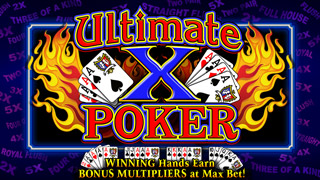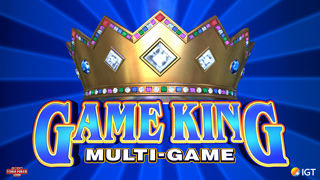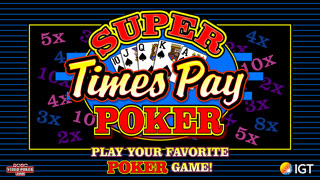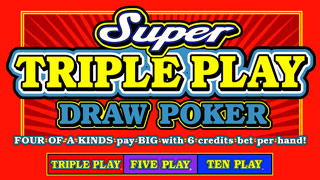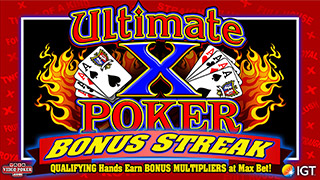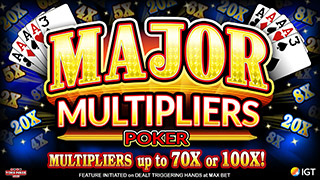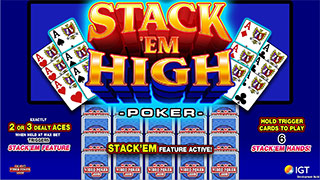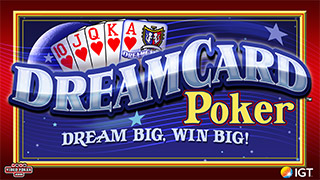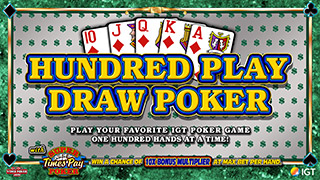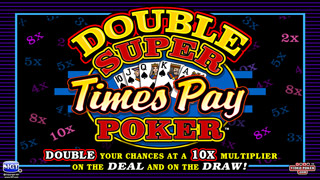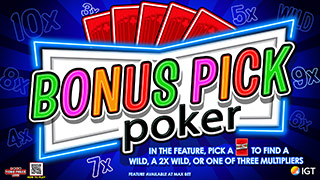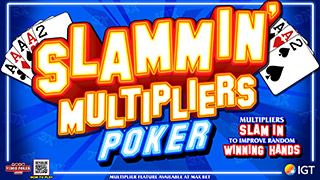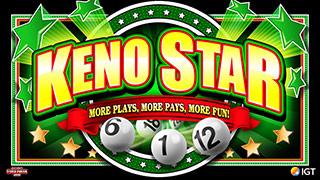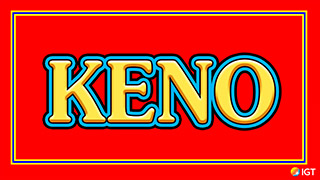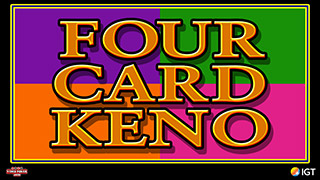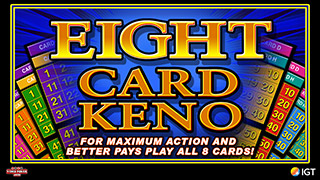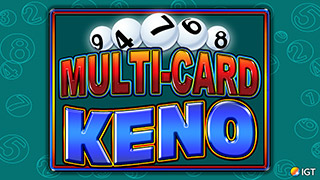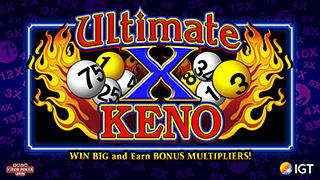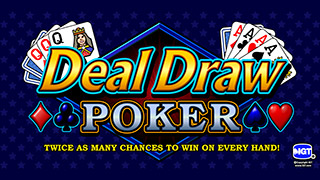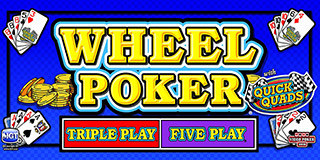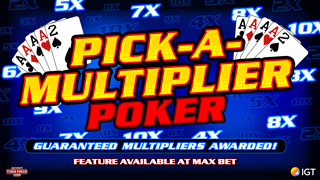Rare hand
-
olds442jetaway
- Video Poker Master
- Posts: 11331
- Joined: Tue Aug 21, 2007 9:08 pm
Re: Rare hand
The gang is exactly correct. Not paying close attention, I was using 1 in 47 forgetting there were 2 cards to draw
-
New2vp
- Video Poker Master
- Posts: 1878
- Joined: Mon Sep 11, 2006 4:02 am
Hey TripTrip, you can look at this several ways. Here are a couple: Let A = the event that the 6 is first card drawn; let B = the event that 6 is the second card drawn. The Probability of (A or B), which your book might express with a symbol that is read as (A union B), is equal to P(A) + P(B) - P(both A and B). Evaluating each of these three probabilities separately, P(A) is 1/47, P(B) is 1/47, and the probability that a 6 can be drawn simultaneously on both the first and second card is zero, since such an event is impossible.
I understand that the 2nd card is drawn after the first, but we can still think separately about the 2nd event independent of the 1st: What is the probability of B without thinking about A at all. For example, let's say you know that someone was drawing two cards to trips and they told you, without you seeing the screen, that they did indeed draw quads. What do you think are the chances that the quad was as a result of the 1st drawn card or the 2nd drawn card? Many would have the intuition that this is a 50/50 proposition. It cannot be 50/50 if there is a greater chance that the 2nd card made the quad. It would not be 50/50, if P(A) = 1/47 and P(B) = 1/46.
If that doesn't quite fly with you, here is a separate approach that specifically takes into account the order of the draws. Either the first card is going to be a 6 or it is not. So, P(A) = 1/47 and P(not A) = 46/47. If (not A) occurs, then we can check P(B | not A). Your stat book will tell you that this is the "conditional" probability of B "given" not A, with the vertical bar indicating that we would calculate the probability that B occurs under the condition that A did not occur. P(B | not A) is indeed 1/46 because there is one less card in the deck and if not A is true, then the first card was not the 6.
But to calculate P(B), you have to look at both possibilities: either A is true or A is false. In symbols, P(B) = P(B | A) x P(A) + P(B | not A) x P(not A). In numbers this would be 0 x 1/47 + 1/46 x 46/47 = 1/47.
If you have access to video poker software that shows you the drawing possibilities of a dealt hand holding trips and discarding the other two cards that are unmatched ranks, you will see that drawing two cards comprises Combin(47,2) = 1081 possibilities. 969 of these 1081 will still be trips, 66 will improve to a full house, and 46 will achieve quad status. The implied probability of quads is therefore 46/1081. If you divide both numerator and denominator by 23, you will get back to 2/47.
I once had a statistics professor tell me that when something that was true did not make intuitive sense, all I had to do was educate my intuition. However, like you, I generally needed to spend some time looking at it myself to see if my intuition actually needed adjusting. Best of luck.
I understand that the 2nd card is drawn after the first, but we can still think separately about the 2nd event independent of the 1st: What is the probability of B without thinking about A at all. For example, let's say you know that someone was drawing two cards to trips and they told you, without you seeing the screen, that they did indeed draw quads. What do you think are the chances that the quad was as a result of the 1st drawn card or the 2nd drawn card? Many would have the intuition that this is a 50/50 proposition. It cannot be 50/50 if there is a greater chance that the 2nd card made the quad. It would not be 50/50, if P(A) = 1/47 and P(B) = 1/46.
If that doesn't quite fly with you, here is a separate approach that specifically takes into account the order of the draws. Either the first card is going to be a 6 or it is not. So, P(A) = 1/47 and P(not A) = 46/47. If (not A) occurs, then we can check P(B | not A). Your stat book will tell you that this is the "conditional" probability of B "given" not A, with the vertical bar indicating that we would calculate the probability that B occurs under the condition that A did not occur. P(B | not A) is indeed 1/46 because there is one less card in the deck and if not A is true, then the first card was not the 6.
But to calculate P(B), you have to look at both possibilities: either A is true or A is false. In symbols, P(B) = P(B | A) x P(A) + P(B | not A) x P(not A). In numbers this would be 0 x 1/47 + 1/46 x 46/47 = 1/47.
If you have access to video poker software that shows you the drawing possibilities of a dealt hand holding trips and discarding the other two cards that are unmatched ranks, you will see that drawing two cards comprises Combin(47,2) = 1081 possibilities. 969 of these 1081 will still be trips, 66 will improve to a full house, and 46 will achieve quad status. The implied probability of quads is therefore 46/1081. If you divide both numerator and denominator by 23, you will get back to 2/47.
I once had a statistics professor tell me that when something that was true did not make intuitive sense, all I had to do was educate my intuition. However, like you, I generally needed to spend some time looking at it myself to see if my intuition actually needed adjusting. Best of luck.
-
New2vp
- Video Poker Master
- Posts: 1878
- Joined: Mon Sep 11, 2006 4:02 am
Eduardo, this was not mine, and I don't know if vegasbabe69 has ever been part of this forum, but in a Daily Contest on January 25, 2016, it looks like all 3 jacks of clubs were drawn after holding 4 cards. I will leave it as an exercise to determine the probability of this occurring, but it seems this should be about 8 times less likely than drawing 3 quads since you only have one drawn card here.
-
New2vp
- Video Poker Master
- Posts: 1878
- Joined: Mon Sep 11, 2006 4:02 am
This one was mine in a contest. It was not nearly as profitable, but much stranger, and much more unlikely to fill 3 or more straight flushes, something like 75 million to 1.
How many times would someone even hold J8 suited? I discarded 532 of clubs, spades, and hearts, respectively. This was a 4-card draw since it is a 6-card game, but I still needed 3 of the 4 cards to be QT9 or T97 of diamonds, which occurs less than one time out of 2000 for each hand. This is not that rare to get one out of ten hands becoming a straight flush, but 3 or more doesn't happen all that often when holding a 2-card double inside straight flush draw.
How many times would someone even hold J8 suited? I discarded 532 of clubs, spades, and hearts, respectively. This was a 4-card draw since it is a 6-card game, but I still needed 3 of the 4 cards to be QT9 or T97 of diamonds, which occurs less than one time out of 2000 for each hand. This is not that rare to get one out of ten hands becoming a straight flush, but 3 or more doesn't happen all that often when holding a 2-card double inside straight flush draw.
-
Eduardo
- Video Poker Master
- Posts: 2965
- Joined: Thu Aug 31, 2006 7:19 pm
Well, anyone could do it with 6 cards.
-
New2vp
- Video Poker Master
- Posts: 1878
- Joined: Mon Sep 11, 2006 4:02 am
-
Jstark
- Video Poker Master
- Posts: 1379
- Joined: Thu Jul 04, 2013 10:16 pm
My rare draw contributions. Draw the same card back to back to back. Hold KQJT and draw each of the remaining T's.
- Attachments
-
- 20210502_181942.jpg (59.8 KiB) Viewed 4641 times
-
New2vp
- Video Poker Master
- Posts: 1878
- Joined: Mon Sep 11, 2006 4:02 am
-
Jstark
- Video Poker Master
- Posts: 1379
- Joined: Thu Jul 04, 2013 10:16 pm
True, but then there's this that I got the day after getting back from Vegas last week.
-
Come Back Kid
- Video Poker Master
- Posts: 1430
- Joined: Mon Feb 06, 2012 9:00 am
Nice!



